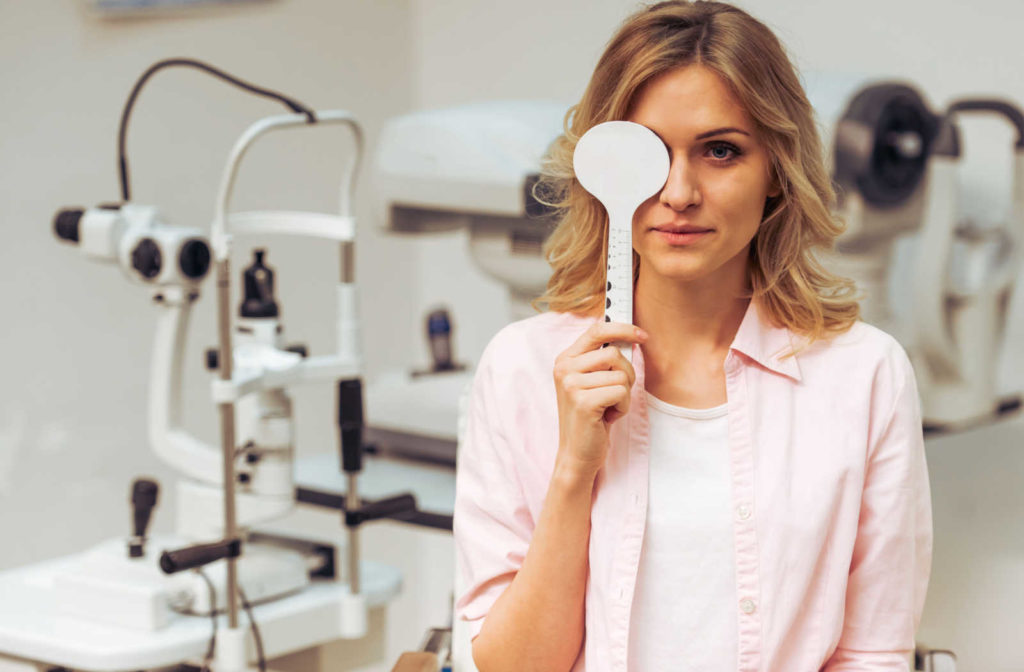There’s a good chance you’ve heard of 20/20 vision, but what about 20/40 vision? These measurements are used to describe visual acuity, which refers to how clearly you can see. 20/20 vision is the benchmark for clear, healthy vision. Having 20/40 vision means you can only see objects from 20 feet that someone with 20/20 vision can see from 40 feet, and you may be affected by conditions like myopia.
It’s important to note that visual acuity is just one aspect of overall visual health, and 20/40 vision does not necessarily imply a significant visual impairment. However, it may still affect everyday activities such as driving or recognizing distant objects.
Your eye doctor can measure your visual acuity during a routine eye exam and prescribe corrective lenses as needed. Even if you have 20/20 vision, it is important to stay up-to-date with regular eye exams to monitor the overall health of your eyes and maintain your vision.
What Is Visual Acuity?
Visual acuity refers to your eye’s ability to distinguish fine details and objects or letters at a given distance. It is often measured by reading an eye chart, such as a Snellen Chart, which consists of lines of letters or symbols that decrease in size as you move down the chart.
Visual acuity is typically expressed as a fraction, such as 20/40. In this case, the first number (20) represents the distance in feet at which the individual’s vision was tested, and the second number (40) represents the distance at which a person with clear vision can read the same line on an eye chart. So, a measurement of 20/40 vision typically means an individual can only clearly see objects from 20 feet away that someone with healthy vision would be able to see from 40 feet away.
Generally speaking, the larger the second number of the fraction is, the less clear your distance vision is.
What Is 20/20 Vision?
One of the most common misconceptions when it comes to eye care is that 20/20 visual acuity equals perfect vision. The truth is, 20/20 vision simply indicates standard healthy vision. If you have 20/20 vision, it means you can see clearly at 20 feet what should normally be seen at that distance.
It is also important to note that visual acuity only accounts for distance vision, meaning you could have 20/20 vision and experience blurred vision when focusing on near objects. It is possible to have 20/20 vision and still experience vision problems such as hyperopia (farsightedness) or presbyopia (loss of focusing ability on close objects).
What Is 20/40 Vision?
As we discussed above, a visual acuity of 20/40 indicates that you may struggle to see objects at a distance. 20/40 vision can indicate that you have nearsightedness (myopia), meaning that near objects appear clearly, but objects in the distance appear blurry.
20/40 vision is not always considered a significant visual impairment. In fact, both Ontario and Quebec set their vision standards for drivers at a minimum of 20/50, meaning individuals with 20/40 vision may be okay to drive without corrective lenses. With that being said, corrective lenses can still be beneficial for allowing individuals with 20/40 vision to see distant objects clearly.

Understanding Your Prescription
Visual acuity plays an important role in determining whether you need corrective eyewear, such as glasses or contact lenses. If your visual acuity indicates you struggle with distance vision, your optometrist may recommend a prescription for corrective lenses at the end of your eye exam.
Your prescription is determined based on your visual acuity measurement and any refractive errors. A refractive error occurs when your eye does not focus light correctly, which can lead to blurred or distorted vision. The most common refractive errors include nearsightedness (myopia), farsightedness (hyperopia), presbyopia, and astigmatism.
Reading Your Prescription
Your prescription will consist of several measurements, including:
- Sphere (SPH): This indicates the amount of lens power, measured in diopters (D), needed to correct nearsightedness (negative values) or farsightedness (positive values).
- Cylinder (CYL): This represents the lens power required to correct astigmatism, a condition where a person’s cornea or lens has an irregular shape. It is also measured in diopters and can have a positive or negative value.
- Axis: This value, measured in degrees, specifies the orientation of the cylinder and is only present if astigmatism correction is needed.
- Addition (ADD): This is typically an additional focal power for individuals with presbyopia, a condition that affects near vision due to age-related changes in the eye’s ability to focus. It is usually written as a positive value.
The only way to accurately measure your prescription is through an eye exam with an optometrist. It is also important to have corrective eyewear fit by an eye care professional for proper vision correction and overall comfort. For glasses, this can include working with an optician to determine the fit and measurements of your frames and lenses, and for contact lenses, this may involve a contact lens fitting with your eye doctor.
How to Correct 20/40 Vision
In many cases, individuals with 20/40 vision can benefit from wearing glasses or contact lenses to correct their vision. Visual acuity of 20/40 can be an indication of nearsightedness, meaning your prescription will most likely be a negative value.
It is possible for someone with nearsightedness to experience presbyopia or astigmatism as well, so you may require a prescription that corrects multiple refractive errors.
Find Your Clear Vision Solution
There’s much more to an eye exam than just a vision test. Routine eye exams are critical for detecting underlying eye conditions and providing early treatment to preserve your eye health. During your eye exam, we can help you understand your vision, your prescription, and the conditions that may be affecting your eyes. Book your next eye exam with LMC Optometry & Eye Care today!



